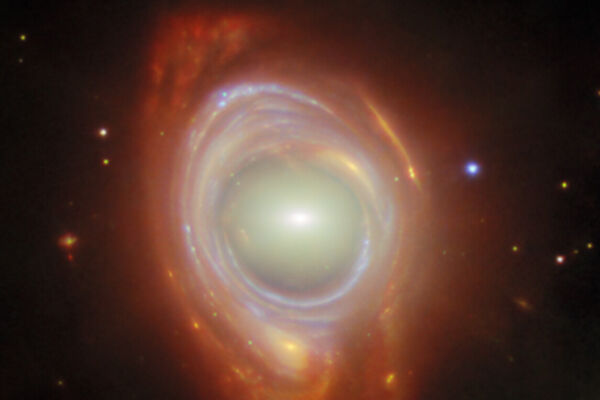The James Webb Space Telescope of the National Aeronautics and Space Administration (NASA) captured a rare Einstein ring, which at first glance appears to be a peculiarly shaped galaxy, but is actually two galaxies located far apart.
In the image released on March 27, the Einstein ring captured by the Webb Space Telescope is actually two galaxies – a foreground galaxy closer to Earth at the center of the picture, and a background galaxy appearing to wrap around the closer galaxy, creating a ring.
When light from a distant object travels around a massive intermediate (or “lens-like”) object and bends (or experiences “gravitational lensing”), an Einstein ring is formed. This is because spacetime (the structure of the universe itself) distorts due to mass, causing light traveling through space and time to bend.
This effect is too subtle to be observed locally, but when astronomers deal with light curvature on a grand astronomical scale, such as when light from one galaxy bends around another galaxy or galaxy cluster, it sometimes becomes visible.
When lens-like objects (foreground) and objects affected by gravitational lensing (background) align perfectly in a line, the result is the formation of a unique Einstein ring around the foreground object, presenting either a complete circle (as shown in the top image) or partial circle, depending on the alignment precision of the two objects. Objects like these are ideal for studying galaxies that are too dim and distant to be seen.
In the image captured by the Webb Space Telescope mentioned above, the lens-like galaxy at the center of the Einstein ring is an elliptical galaxy, located in a galaxy cluster called SMACSJ0028.2-7537. The galaxy appearing to wrap around the elliptical galaxy is a spiral galaxy.
Although the light from the spiral galaxy has already been distorted as it travels around the elliptical galaxy, individual star clusters and gas structures remain clearly visible along its path.
The Einstein ring is a strong example of gravitational lensing. According to physicist Albert Einstein’s general theory of relativity, light traveling in space curves around celestial bodies, acting like a giant lens, focusing the light.
For massive celestial bodies such as galaxies and galaxy clusters, this gravitational lensing effect is more pronounced. This means that sometimes we can see light from distant galaxies that would otherwise be hidden.

